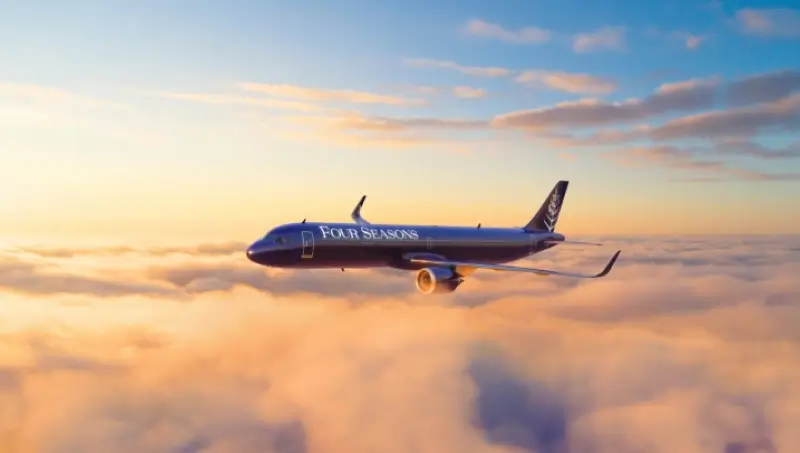
Crosswind Landing
Nov 11, 2013

Crosswind landing is a challenging maneuver pilots must master to safely land an aircraft in windy conditions where the wind blows perpendicular to the runway. This technique involves adjusting the aircraft's approach angle and using a combination of rudder and aileron inputs to maintain control and alignment with the runway. Pilots often employ a method called "crab" or "wing-low" to counteract the wind's force, ensuring a stable descent. Precision and coordination are crucial, as misjudgments can lead to difficulties during touchdown. Successful crosswind landings require practice and skill, making it a vital aspect of pilot training and proficiency.
Understanding Crosswind Landing
Crosswind landing is a critical skill for pilots, especially when flying in varying wind conditions. The ability to land an aircraft safely while contending with crosswinds can be the difference between a routine landing and a challenging scenario. In this article, we will explore the techniques and considerations involved in executing a successful crosswind landing.
The Mechanics of Crosswind Landing
When approaching to land in a crosswind, the pilot must adjust the aircraft's alignment and approach angle to compensate for the wind direction. This involves a combination of techniques including bank angle, rudder input, and a controlled descent path.
Key Techniques for Crosswind Landing
To ensure a safe and effective crosswind landing, pilots should utilize the following techniques:
- Crab Technique: This method involves angling the aircraft into the wind while maintaining a straight path toward the runway. The pilot uses ailerons to keep the aircraft aligned with the runway centerline.
- Side Slip Technique: In this technique, the aircraft is banked slightly into the wind while using opposite rudder to maintain alignment with the runway. This method is effective in managing higher crosswind components.
- Transition to Landing: As the aircraft nears the runway, the pilot must transition from the crab or side slip into a straight alignment just before touchdown to ensure a smooth landing.
Charting Crosswind Components
Understanding wind components is crucial for planning a crosswind landing. The following table outlines the relationship between wind speed, angle, and the resulting crosswind component.
| Wind Speed (Knots) | Wind Angle (Degrees) | Crosswind Component (Knots) |
|---|---|---|
| 10 | 30 | 5.0 |
| 15 | 45 | 10.6 |
| 20 | 60 | 17.3 |
| 25 | 90 | 25.0 |
As shown in the table, the crosswind component increases with higher wind speeds and angles, making it essential for pilots to assess the conditions before attempting a landing.
Factors Influencing Crosswind Landings
Several factors can affect the difficulty of a crosswind landing:
- Aircraft Type: Different aircraft have varying capabilities in handling crosswinds. Heavier aircraft may be more stable, whereas lighter aircraft can be more susceptible to wind gusts.
- Runway Orientation: The alignment of the runway relative to the wind direction can significantly impact the landing approach. Crossrunways may be more challenging.
- Pilot Experience: Experienced pilots are more adept at handling crosswinds, employing techniques that minimize the risk of mishaps.
Preparing for a Crosswind Landing
Preparation is key when anticipating a crosswind landing. Pilots should:
- Check Weather Reports: Understanding the wind conditions well in advance can help in planning the approach and landing strategies.
- Practice Techniques: Regular training in varied wind conditions will enhance a pilot's ability to perform crosswind landings effectively.
- Communicate with Air Traffic Control: Keeping ATC informed about intentions and wind conditions allows for better situational awareness.
Common Mistakes in Crosswind Landings
Even experienced pilots can make errors during crosswind landings. Some common mistakes include:
- Insufficient Crab Angle: Failing to angle the aircraft adequately into the wind can lead to drifting off the runway centerline.
- Delayed Transition: Not transitioning to straight alignment in time can result in a hard landing or runway excursion.
- Panic During Gusts: Overreacting to sudden gusts can lead to loss of control; a calm and measured response is crucial.
Conclusion
Mastering crosswind landings is an essential skill for pilots. By understanding the mechanics, preparing adequately, and practicing regularly, pilots can enhance their ability to handle these challenging conditions. Safety should always be the primary concern, and pilots must know their limits and the capabilities of their aircraft.
For those looking to refine their aviation skills further, resources such as flight schools and simulator training programs can provide valuable hands-on experience. Remember, a skilled pilot is not just one who can fly straight; they are also adept at navigating the complexities of the skies, including the unpredictable nature of wind.
Related Articles

Explore Thailand: The Best Islands to Visit for Paradise, Adventure, and Relaxation

The Ultimate Guide to the Best Islands in Thailand for Your Next Getaway

Do babies need passports? How to get a passport for a newborn

How to get a U.S. passport fast: here’s how to expedite the process

What is Mobile Passport Control: 5 reasons why you should use it

SENTRI vs. Global Entry: A detailed guide

Do you need a passport to go to the Bahamas? Let’s find out

Do you need a passport to go to Mexico? A detailed guide

Do you need a passport to go to Canada? We got the answer

Do You Need a Passport for a Cruise: An Essential Travel Guide

Booster Seat Requirements: All the Rules to Follow in Your Rental Car

What Are the World’s Most Powerful Passports, and How Does Yours Rank?

How to Take a Passport Photo at Home: A Helpful Guide

You've got to have heart! Southwest's new livery

Your opinion: Should water be free on low cost carriers?

Young women bolder than guys as solo travellers
